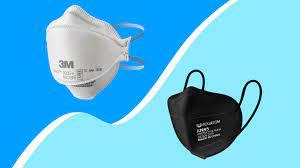Don't wanna be here? Send us removal request.
Text
Filtration Efficiency, Effectiveness, and Availability of N95 Face Masks for COVID-19 Prevention
In March 2020, the taking off number of extreme intense respiratory condition Covid 2 (SARS-CoV-2) diseases brought about a phenomenal deficiency of individual defensive hardware (PPE) for clinicians and fundamental medical services workers.1 The lack was generally significant among N95 veils.n95 mask, named for their capacity to channel 95% or a greater amount of little 0.3-μm particles, are the backbone of security against airborne pathogens.2 Airborne transmission results from contact with irresistible particles held inside little (<5 μm) drop cores (ie, sprayers) that can wait in the air for a really long time and be scattered over incredible distances.2 conversely, SARS-CoV-2 is fundamentally spread by huge (>5-10 μm) respiratory beads that can be ousted up to 6 feet evenly and drop to the ground in no time, against which careful veils commonly offer sufficient protection.2,3 Nonetheless, the Centers for Disease Control and Prevention suggests that medical services laborers use N95 veils while really focusing on patients with affirmed or thought Covid sickness 2019 (COVID-19) out of worry for airborne transmission, especially during openness to methods that produce high groupings of sprayers (eg, intubation, extubation, painless ventilation).2 To moderate the deficiency of N95 respirators, numerous medical care offices are chasing after nonstandard ways to deal with keeping a satisfactory inventory, including cover cleaning and going back over for reuse, which expand the wearable existence of the veil past the lapse date, and obtaining KN95 veils (N95 veils that are managed in China).

In this issue of JAMA Internal Medicine, Sickbert-Bennett and colleagues4 give consoling proof of the presentation of nonstandard ways to deal with saving the N95 veil supply. The creators' lab based assessment of a wide exhibit of nonstandard facial coverings shows that National Institute for Occupational Safety and Health (NIOSH)- supported N95 respirators beat choices concerning filtration effectiveness. Aftereffects of the review showed that N95 covers gone back over utilizing ethylene oxide cleansing, as well as veils that are as long as 11 years past lapse, keep up with extremely high filtration productivity under research center circumstances. N95 veils with less than ideal fit actually had equivalent filtration effectiveness of over 90%. Their KN95 partners, a great many which have been bought by or given to US medical clinics, performed less well, with filtration productivity going from 53% to 85%. Careful covers got with either ties or ear circles likewise had a lot of lower filtration productivity of 37% to 69%, as may be normal by their more agreeable, more slender channel and looser fit.
In spite of the clear flawed filtration productivity of non-NIOSH endorsed respirators and careful veils in the research center, there is justification behind good faith in regards to their genuine viability. Albeit careful veils have lower filtration effectiveness than N95 respirators, observational examinations have shown no huge advantage of N95 veils over careful covers for counteraction of extreme intense respiratory disorder Covid 1 (chances proportion, 0.86; 95% CI, 0.22-3.33) or other respiratory infections (chances proportion, 0.96; 95% CI, 0.85-1.08).3 For medical services laborers, routine consideration for a patient with COVID-19 assuming both are wearing careful covers isn't viewed as a high-risk word related exposure.3 Yet, SARS-CoV-2 viral particles have been distinguished in the air for a few hours after a spraying occasion reenacted in a research center and close to air vents in a clinical setting.3 A gathering of 239 researchers as of late marked an open letter asking the World Health Organization and other worldwide general wellbeing bodies to suggest extra safety measures (however not N95 veils explicitly) to safeguard against expected airborne transmission, featuring a few ongoing superspreading occasions in which SARS-CoV-2 transmission happened in ineffectively ventilated areas.5 These examples raise worry for the chance of SARS-CoV-2 airborne transmission; nonetheless, the practicality and irresistibleness of SARS-CoV-2 viral particles in spray structure stays obscure. Significantly, no archived SARS-CoV-2 episodes have been connected to settings in which careful veils were perseveringly utilized in lieu of N95 veils, which proposes that regardless of whether airborne transmission is an extensive supporter of SARS-CoV-2 transmission, careful covers are reasonable adequate to forestall it.3 Because the irresistible portion of infection expected to cause clinical contamination likewise stays obscure, conceivable obstructing most, regardless of whether not all, popular particles through veils with lower filtration efficiencies of submicron particles is adequate to forestall illness in by far most of cases.
1 note
·
View note